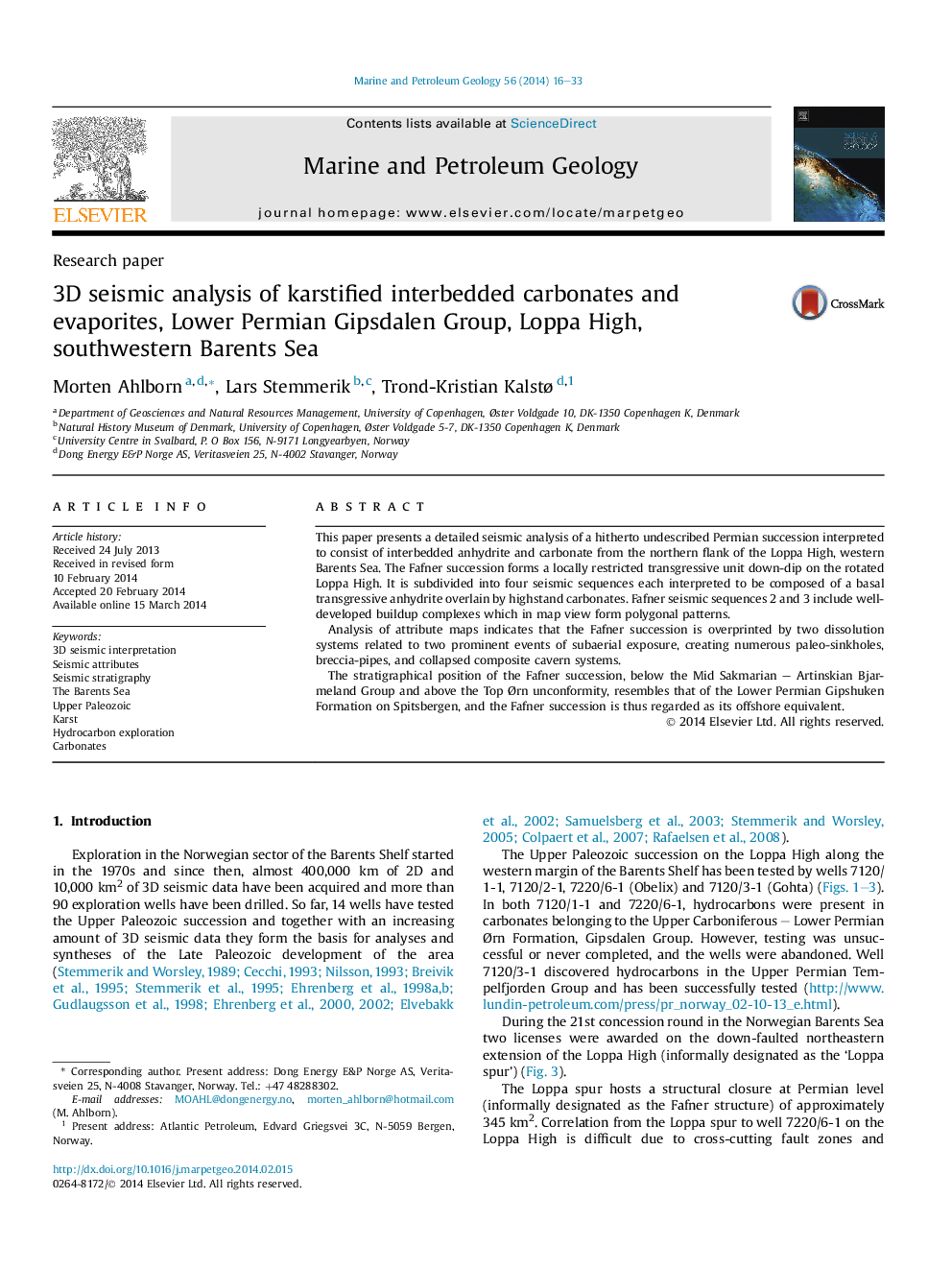| Article ID | Journal | Published Year | Pages | File Type |
|---|---|---|---|---|
| 6435269 | Marine and Petroleum Geology | 2014 | 18 Pages |
â¢The Fafner succession from the Loppa High is divided into four seismic sequences.â¢Each sequence represents transgressive evaporites overlain by highstand dolomites.â¢Two of the four seismic sequences contain complex polygonal buildup systems.â¢Two overprint systems with collapse features are recognized in the succession.â¢The succession represents an offshore equivalent to the Gipshuken Formation on Svalbard.
This paper presents a detailed seismic analysis of a hitherto undescribed Permian succession interpreted to consist of interbedded anhydrite and carbonate from the northern flank of the Loppa High, western Barents Sea. The Fafner succession forms a locally restricted transgressive unit down-dip on the rotated Loppa High. It is subdivided into four seismic sequences each interpreted to be composed of a basal transgressive anhydrite overlain by highstand carbonates. Fafner seismic sequences 2 and 3 include well-developed buildup complexes which in map view form polygonal patterns.Analysis of attribute maps indicates that the Fafner succession is overprinted by two dissolution systems related to two prominent events of subaerial exposure, creating numerous paleo-sinkholes, breccia-pipes, and collapsed composite cavern systems.The stratigraphical position of the Fafner succession, below the Mid Sakmarian - Artinskian Bjarmeland Group and above the Top Ãrn unconformity, resembles that of the Lower Permian Gipshuken Formation on Spitsbergen, and the Fafner succession is thus regarded as its offshore equivalent.
